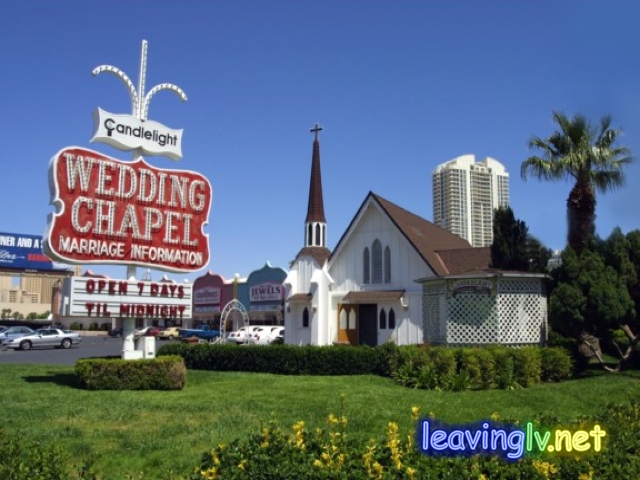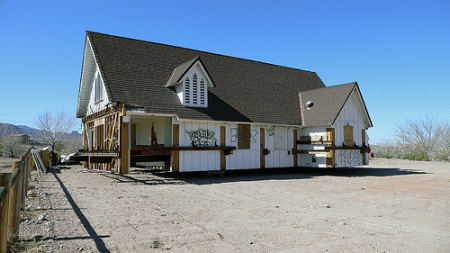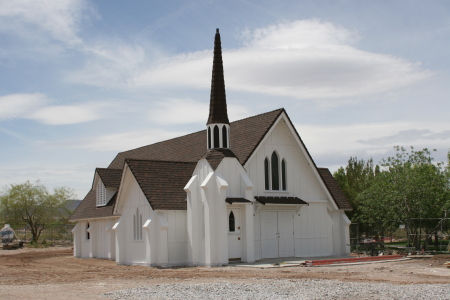
From the Las Vegas Sun:
It survived a tricky journey across town, required more than $250,000 in renovation, including a new steeple, scavenged furnishings and electrical rewiring.
But when you’re a 1966 wedding chapel — old by Las Vegas standards — and you have a few stories to tell, somebody’s bound to love you.
That’s pretty much how it unfolded for the Candlelight Wedding Chapel, a quaint, free-standing churchlike structure with steep roof lines that sat four decades on Las Vegas Boulevard.
Originally Little Church of the West Algiers and then All Religions Wedding Chapel, it was the first chapel with an 800 number and limo service. It married so many couples daily that a side door was installed to usher out fresh newlyweds so they wouldn’t bump into wedding parties making their formal procession down the aisle.
When its land was sold to the Fontainebleau project, the chapel sat empty until its former operator, Gordon Gust, scooped it up and gave it to the Clark County Museum.
On Saturday the chapel officially becomes a new exhibit on the museum’s Heritage Street and opens to the public with a party, complete with live music, wedding cake and photo ops for couples who were married at the chapel.
“It’s one of those things you don’t think of as history, but it’s important here,” says Mark Hall-Patton, administrator of the Clark County Museum. “Five percent of all marriages in the United States are held in Clark County. That’s one out of 20 marriages.”
Grants from the Las Vegas Convention and Visitors’ Authority and the Nevada Cultural Affairs Commission paid for the renovation, a project of the county’s 2009 Centennial celebration.
It arrived at the museum in 2007. Renovation began in May.
 The Candlelight Wedding Chapel when it arrived at the Clark County Museum
The Candlelight Wedding Chapel when it arrived at the Clark County Museum
The chapel is decorated to its latest incarnation (white), rather than its previous red exterior, paneled walls and red carpet. Its original pews and organ are gone and replaced with a piano and benches rescued from the county courthouse, resized and refinished.
Its large neon sign, which was added later, is across town at the Neon Museum.
Hall-Patton says museum staff had its eyes on the chapel for 10 years, identifying it as a building the museum would like to own if it ever became available. The museum is home to Heritage Street, a tree-lined gravel road hidden from Boulder Highway and flanked with rescued historic homes, a railroad depot and a print shop.
Visitors can sit on the wooden rocking chairs on the porch of the Beckley House and tour homes, each decked out to its era, each with its own nooks and crannies. They’re adorned at Christmastime and welcome trick-or-treaters on Halloween. (For Saturday’s party, the Clark County Museum Guild will serve cookies, with recipes specific to each home’s era.)
The railroad depot, taken to the site in 1976, was the first building to arrive. The oldest home is a railroad cottage (circa 1911-1914) awaiting renovation.
The chapel, inspired in design by the Little Church of the West, is its youngest structure. Celebrities married there include Bette Midler, Michael Caine, Whoopi Goldberg and Barry White.
“When we look at a building, we look at it from a standpoint that we could use it to best teach that part of our history,” he says. “In 1931 Nevada liberated both divorces and weddings. Reno got divorces. We became the wedding capital.”

Special thanks to Joel Rosales at leavinglv.net and Allen Sandquist for letting us these images.






